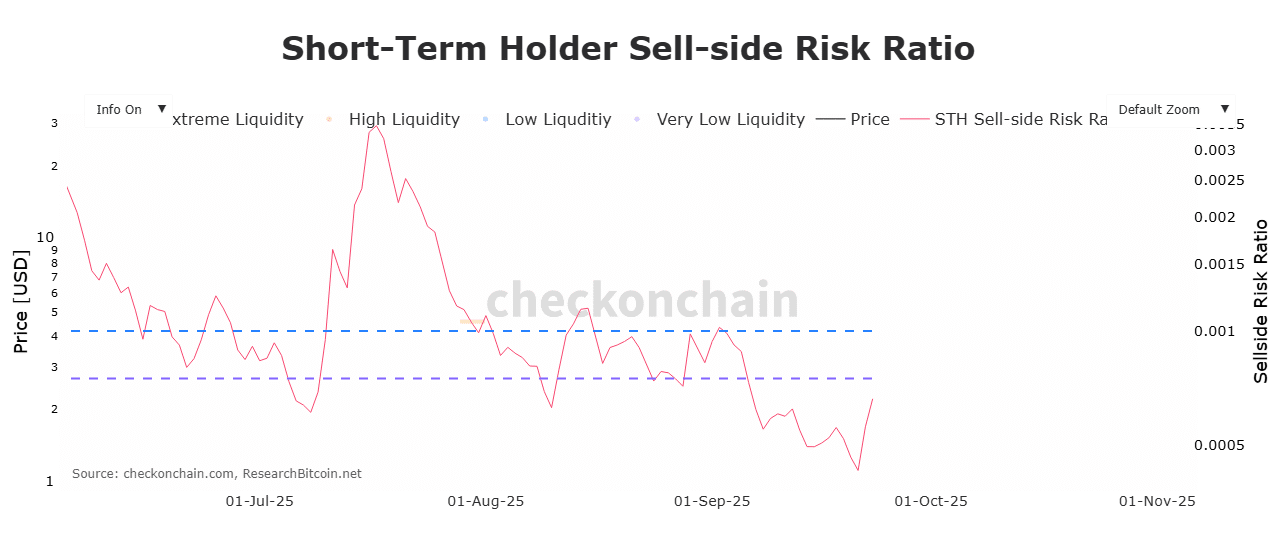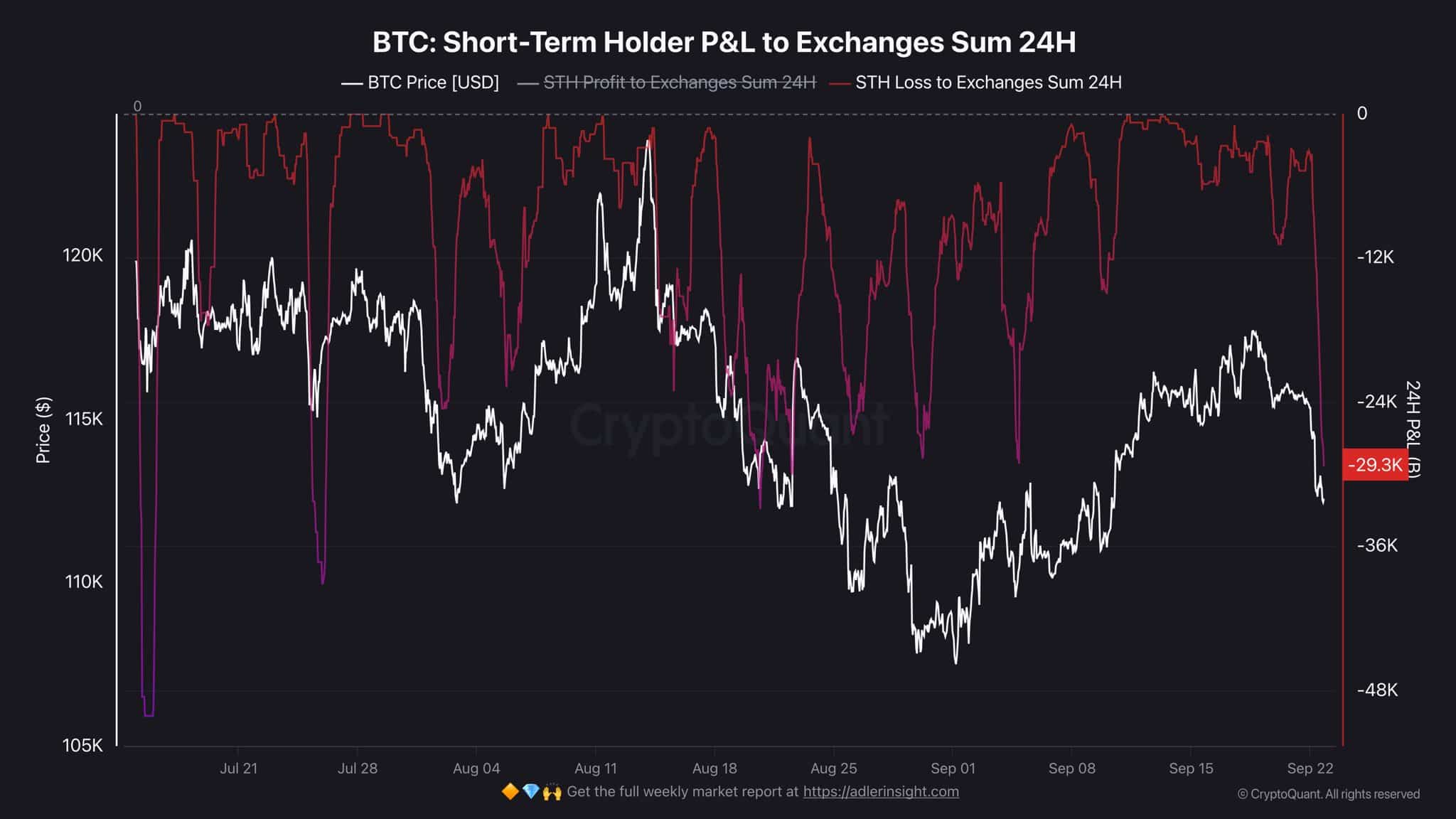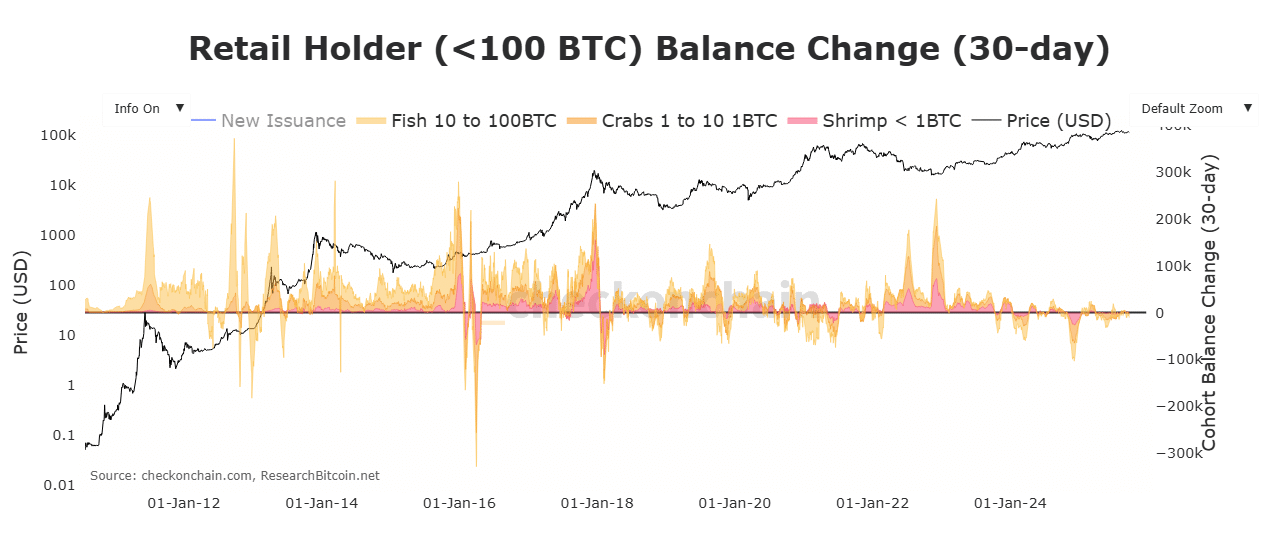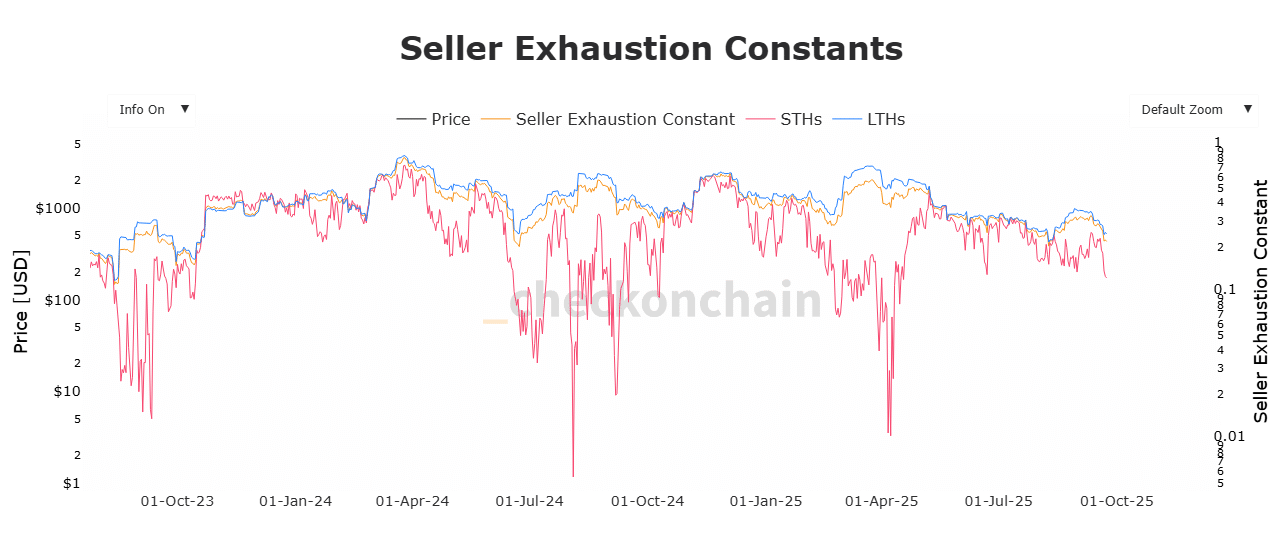Bitcoin short-term holders are under pressure after realizing losses on roughly 30,000 BTC, with sell-side risk spiking to 0.00055 and unrealized profits largely erased; seller exhaustion now suggests supply may thin and a relief bounce is possible if demand returns.
-
STHs realized ~30,000 BTC in losses in one day
-
Sell-side Risk hit 0.00055, indicating panic selling from short-term cohorts
-
Retail cohorts (Shrimps, Fish, Crabs) showed net negative balance changes: Fish -6.6k BTC, Crabs -4.4k BTC, Shrimp -475 BTC
Bitcoin short-term holders face heavy losses after sell-side risk spike; monitor $112,000 support and seller exhaustion for a potential rebound. Read analysis and key levels.
What is putting Bitcoin short-term holders under pressure?
Bitcoin short-term holders are pressured by rapid price weakness that forced realizations and cut unrealized profits. On-chain indicators show mass exits by STHs, elevated sell-side risk and declining cohort balances, signaling capitulation by shorter-term retail participants.
How large were the realized losses and which data sources report them?
On-chain analytics reported STHs realized losses on nearly 30,000 BTC in one day. CryptoQuant and on-chain researchers (reported by industry analysts) highlighted the scale, and an analyst identified as Darkfost flagged the single-day realization figure.
Why did sell-side risk spike and what does it mean?
Sell-side Risk rose to a two-week high of 0.00055, reflecting concentrated selling pressure from short-term holders. Elevated sell-side risk typically indicates panic liquidation and a higher probability of short-term volatility until sellers are exhausted.
What happened to unrealized profits for recent buyers?
With BTC below $114,000, unrealized profits for STHs were largely erased and September buyers recorded heavier losses. That reduction in unrealized gains reduces conviction and can accelerate further selling among retail cohorts.
How did retail cohorts respond?
Retail groups turned broadly bearish. Checkonchain data showed net negative balance changes across Shrimps, Fish and Crabs, implying these holders sold more than they bought during the downturn. Fish: -6.6k BTC, Crabs: -4.4k BTC, Shrimp: -475 BTC.
What signs point to potential stabilization?
Signs of relief appeared as the Seller Exhaustion Constant declined, suggesting STHs had largely liquidated over the prior three days. Falling STH sell flows and lower exhaustion often precede consolidation or a relief bounce if demand re-emerges.
Which price levels matter near term?
Key technical levels to watch are $112,000 (short-term support) and $115,896 (near-term upside target). A failure to hold $112,000 could expose $111,645 as the next downside reference, while sustained buying could push BTC back toward $115,896.
Bitcoin [BTC] fell below its consolidation band and touched a 12-day low near $111,000 before a modest recovery. At press time, BTC traded around $113,213 (a 0.41% daily uptick), remaining down 2.24% on the week.
Bitcoin short-term holders face heavy losses
As BTC declined, STHs began exiting positions. Sell-side Risk spiked to 0.00055, signaling sizable panic selling. On-chain commentators noted the scale of realized losses and the near-elimination of unrealized profits for short-term cohorts.

Source: Checkonchain
Analysts including Darkfost (CryptoQuant commentary) reported that STHs realized losses on nearly 30,000 BTC in one session. That magnitude of selling materially reduced short-term holder profitability and increased market stress.

Source: CryptoQuant
Retail cohorts turn bearish
Retail traders largely capitulated as balance changes across cohorts went negative. Checkonchain metrics showed net outflows across the board, a clear bearish signal from smaller holders who often sell into weakness.

Source: Checkonchain
At press time Fish balance change was -6.6k BTC, Crabs -4.4k BTC and Shrimp -475 BTC, signaling elevated selling from retail cohorts.
There’s still hope
Checkonchain’s Seller Exhaustion Constant has declined, indicating many STHs already sold through recent weakness. That dynamic often precedes consolidation or relief rallies when buying interest returns.

Source: Checkonchain
Falling STH sell flows and lower exhaustion suggest sellers may be running out of coins to dump, which can set the stage for stabilization if demand strengthens.
Bitcoin’s near-term path
Analysts observed a strong downtrend as STHs capitulated, but exhaustion hints at a relief bounce scenario. Sellers remain dominant, so price action around $112,000 will be decisive.
If $112,000 holds, BTC could attempt a rebound toward $115,896; failure to hold that support risks a slide to $111,645.
Key Takeaways
- STH losses were significant: Realizations approached ~30,000 BTC, erasing many unrealized gains.
- Retail selling dominated: Fish, Crabs and Shrimp cohorts posted net negative balance changes.
- Watch seller exhaustion: Declining exhaustion and lower sell flows could permit stabilization and a relief bounce if demand re-enters.
Conclusion
Bitcoin short-term holders have borne heavy losses as sell-side risk spiked and retail cohorts sold into weakness. On-chain metrics show capitulation but also a decline in seller exhaustion, offering a path to stabilization if buyers defend $112,000 and push toward $115,896. Monitor on-chain flows and key price levels for confirmation.
Frequently Asked Questions
How much BTC did STHs realize in losses during the sell-off?
On-chain reports indicate short-term holders realized approximately 30,000 BTC in losses within a single day, accelerating market stress and reducing cohort profitability.
What does a rising sell-side risk indicate?
A rising sell-side risk shows concentrated selling pressure from short-term holders and often precedes increased volatility and potential capitulation among retail traders.
